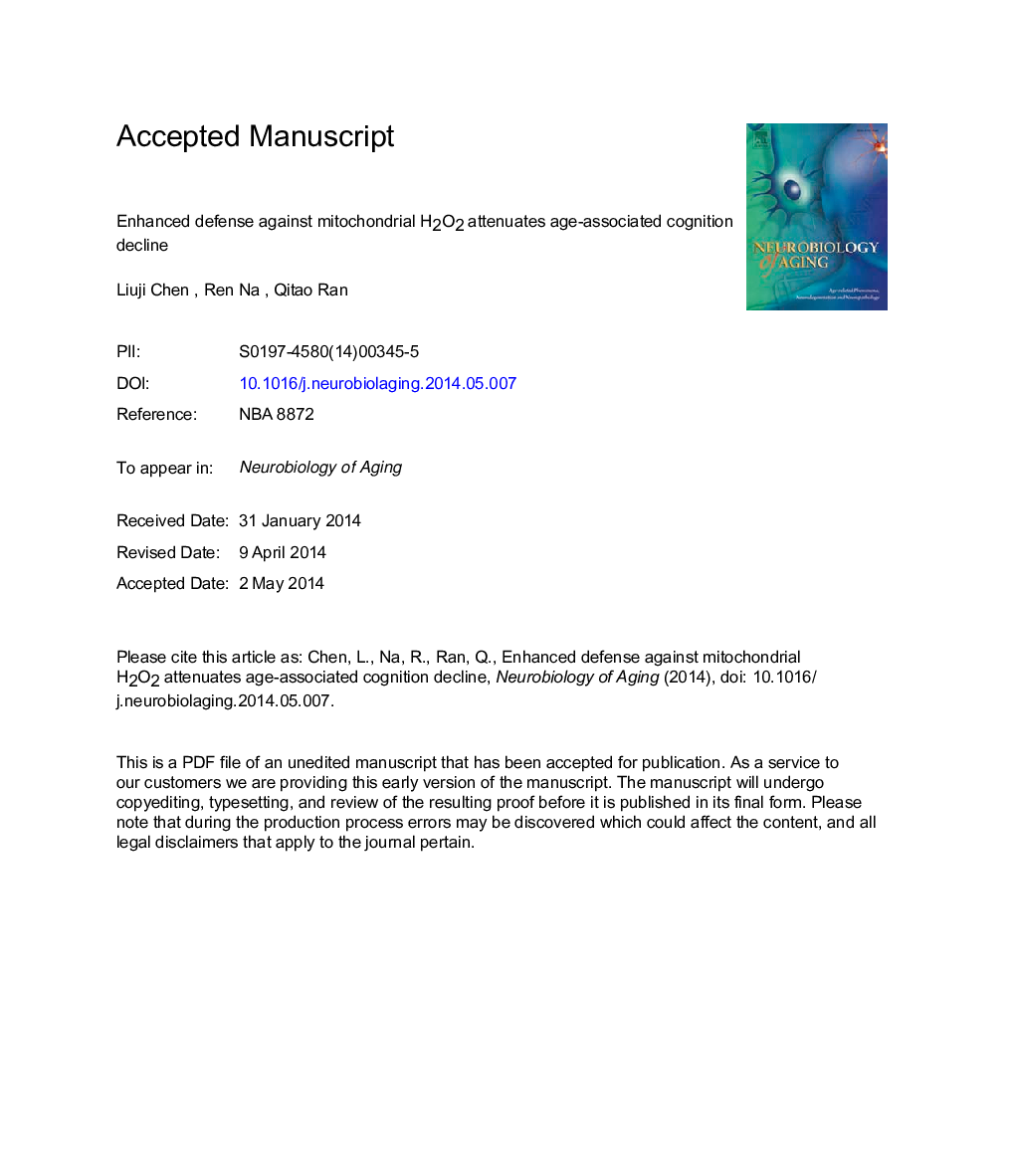| Article ID | Journal | Published Year | Pages | File Type |
|---|---|---|---|---|
| 6805436 | Neurobiology of Aging | 2014 | 38 Pages |
Abstract
Increased mitochondrial hydrogen peroxide (H2O2) is associated with Alzheimer's disease and brain aging. Peroxiredoxin 3 (Prdx3) is the key mitochondrial antioxidant defense enzyme in detoxifying H2O2. To investigate the importance of mitochondrial H2O2 in age-associated cognitive decline, we compared cognition between aged (17-19Â months) APP transgenic mice and APP/Prdx3 double transgenic mice (dTG) and between old (24Â months) wild-type mice and Prdx3 transgenic mice (TG). Compared with aged APP mice, aged dTG mice showed improved cognition that was correlated with reduced brain amyloid beta levels and decreased amyloid beta production. Old TG mice also showed significantly increased cognitive ability compared with old wild-type mice. Both aged dTG mice and old TG mice had reduced mitochondrial oxidative stress and increased mitochondrial function. Moreover, CREB signaling, a signaling pathway important for cognition was enhanced in both aged dTG mice and old TG mice. Thus, our results indicate that mitochondrial H2O2 is a key culprit of age-associated cognitive impairment, and that a reduction of mitochondrial H2O2 could improve cognition by maintaining mitochondrial health and enhancing CREB signaling.
Related Topics
Life Sciences
Biochemistry, Genetics and Molecular Biology
Ageing
Authors
Liuji Chen, Ren Na, Qitao Ran,
